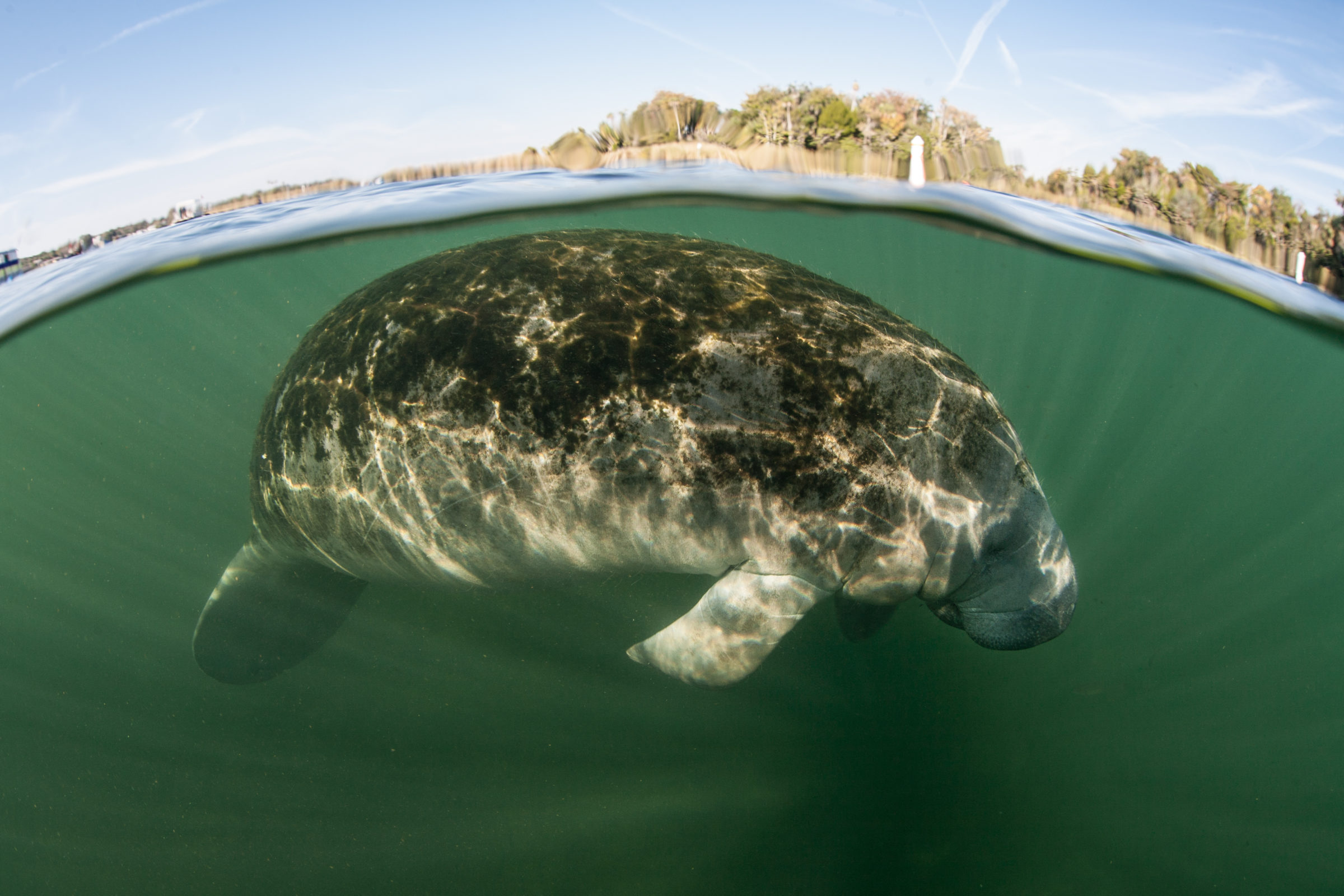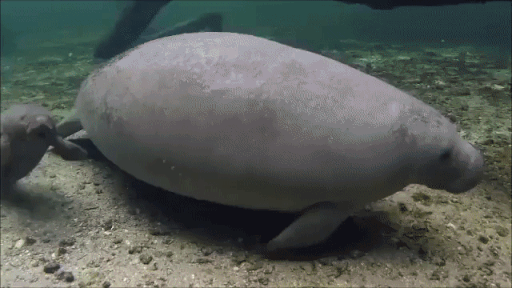9 Reasons You Can’t Help but Love Manatees
Published by Ocean Conservancy
Get ready, because November is Manatee Awareness Month!
You may know West Indian manatees are one of the most adorable and graceful creatures in areas like the Gulf of Mexico, but there are some things about them that may truly surprise you. These nine facts will lead you to an even greater appreciation for ‘sea cows.’ It’ll also help build your knowledge base to impress your friends if you see a manatee sign while visiting the warm waters of the Southeast this year! Which one of these facts will you find most surprising?
- For their size, manatee diets may surprise you. While weighing up to around 1,200 pounds and eating about 10% of their body weight every single day, these vegetarians have a salad-type diets of mangrove leaves and seagrass! Manatees are affectionately nicknamed “sea cows” for their relaxed, constantly grazing manner—and they only move at an average of five miles per hour, with the exception of small, short bursts every now and then around 15 miles per hour. So, while they do eat largely vegetarian diets, their slow lifestyles filled with frequent eating explain why these animals truly are so plump!
![mangrove-trees-2367294_1920]()
![mangrove-trees-2367294_1920]()
- Manatees aren’t huge fans of the cold, so their preference around coastlines like Florida’s makes sense. Despite their largely padded bodies, they prefer warm, comfortable waters around or above 60°F. Any areas below this temperature place these creatures at risk for losing their life due to stress, which is why you’ll mostly find them in the cozily-temperatured coastal waters of the southeastern United States. They also prefer calmer bodies of water, so look for them in places like estuaries and rivers that lead to coastal waters.
- Manatees might move slowly, but they’re one of the most playful creatures we know! Easily amused, manatees love to perform barrel rolls and body surf to entertain themselves. Oh, and if you think you’ve ever seen something cuter than a manatee enjoying themselves by rolling around in the water, it sounds like you have yet to see a video like the one below.
- Since their diets consist largely of very soft, easily digestible foods, manatee teeth are solely molars. They have no need for super sharp chompers, which is probably why you’ve never heard of a manatee harming someone by biting them. They also regrow their teeth if any fall out!
![Florida Manatee Underwater]()
![Florida Manatee Underwater]()
© ead72/Fotolia - Though much smaller in size and obviously water-dwelling, the manatee is a distant cousin of the elephant! If you look very closely, the manatee’s face displays a small but noticeable trunk-like appearance. In combination with their tiny bristle-like hairs and tough, grey-colored skin, this family commonality isn’t too hard to believe at all!
- Something you may not have known about manatee anatomy? They have toenails on their flippers! Why could this be? Relating back to their relation to elephants, research tells us that manatees were actually once land mammals and developed these when they could walk on land.
- We may not have evidence of mermaids yet, but we were close… During his first trip to the Americas, Christopher Columbus documented spotting three ‘mermaids’ in the waters of Haiti. Considering the details contained in his description of these ‘mermaids,’ it’s now believed that the creatures Columbus spotted were much less human and likely just manatees! Close enough, Columbus…close enough.
- Even though manatees appear to have very small eyes and ears, they have an extremely keen sense of sight and hearing. Though tiny, their eyes showcase a retractable membrane, resulting in protection from harmful irritants in the waters around them. And their ears? Just like the rest of their bodies, the bones in their inner ears are significantly sized, making their hearing abilities extremely sharp.
![giphy-downsized-large (3)]()
![giphy-downsized-large (3)]()
GIF: Giphy - Manatees are some of the most dedicated mothers we know. With lengthy gestation periods, manatee moms are pregnant with their young for an average of an entire year and take care of their young for several years after birth. That not only results in an incredible bond between mother and calf, but also some adorable manatee family photos you’ve probably seen across the internet!
With all these incredible facts, who couldn’t help but adore and want to take care of these graceful coastal giants? Sadly, these truly amazing creatures are extensively vulnerable to harm as a result of certain human activities. They are often hit by the propellers of boats and fast-moving watersports vehicles, resulting in many individuals suffering deep, large scars across their faces and bodies and ingest discarded items like fish hooks.
But there are ways you can help during Manatee Awareness Month!
- Be mindful while you’re boating and follow waterway laws like speed limitations.
- Keep a lookout for manatee signs, so you know when to slow down in certain areas.
- Never approach manatees in the wild, even if they’re simply resting. Though adorable, sea cows are best admired from afar.
- Keep your trash and waste contained, too, to help keep these animals’ home clean.
- Last, but certainly not least, give manatees some love on social media! Update your cover photo with a photo of a manatee, show your friends videos of them in healthy environments, or share articles like this that educate people on how to best understand and protect them.
With voices like yours, we can help protect one of the most beloved creatures of the Southeast and Gulf of Mexico and keep manatees around for generations to come.
The post 9 Reasons You Can’t Help but Love Manatees appeared first on Ocean Conservancy.
Read the full article at: https://oceanconservancy.org/blog/2017/11/07/9-reasons-cant-help-love-manatees/






